Name HMS Jupiter Laid down 3 October 1966 Decommissioned 22 April 1992 Construction started 3 October 1966 Length 113 m | Namesake Jupiter (mythology) Commissioned 9 August 1969 Identification F60 Launched 4 September 1967 | |
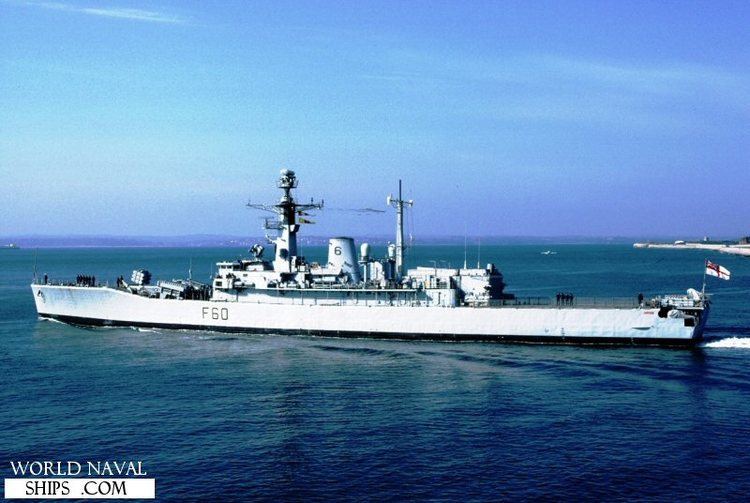 | ||
HMS Jupiter (F60) was a Batch 3 Leander-class frigate of the Royal Navy (RN). She was, like the rest of the class, named after a figure of mythology. Built by Yarrow Shipbuilders of Scotstoun, she was launched on 4 September 1967 and commissioned on 9 August 1969.
Contents
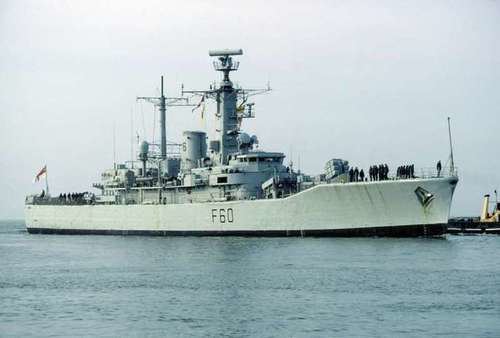
1970s
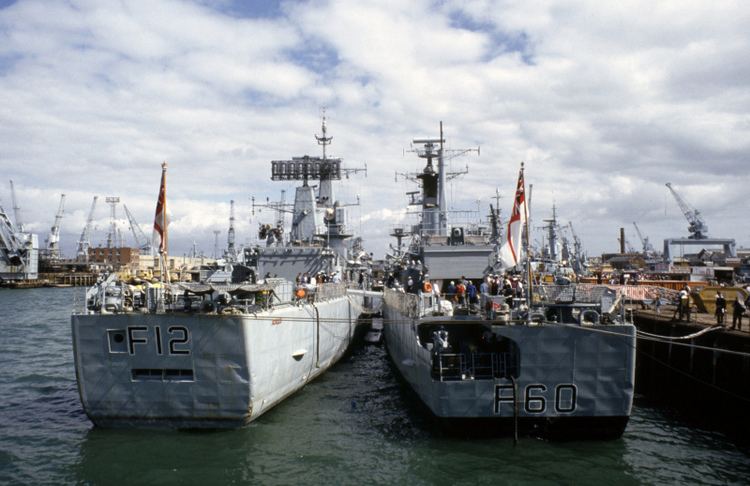
In 1970, HMS Jupiter (Commander Ken Maun) deployed to the West Indies, a common duty for the RN, and which continues to the present day. In 1971, she joined Standing Naval Force Atlantic (STANAVFORLANT), a multi-national squadron of NATO. In 1972, Jupiter was again present in the West Indies again as part of STANAVFORLANT taking over the duty of HMS Naiad which had suffered a disabling breakdown. The following year, Jupiter took part in the Second Cod War. Jupiter then visited Africa on her way to the Far East and Pacific, and when she reached the Far East, Jupiter did a variety of duties, including performing fly-the-flag visits to numerous ports. Jupiter also visited Christchurch, New Zealand during the 1974 Commonwealth Games. She also visited the American naval base at Pearl Harbor where some propulsion problems were sorted out. Charles, Prince of Wales joined Jupiter as Ship's Communications Officer, in January 1974, and remained in Jupiter until her return to the UK later that year.
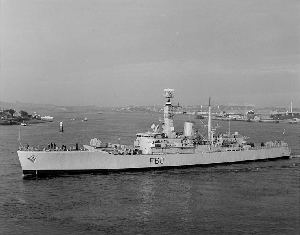
In late 1976, Jupiter joined the 7th Frigate Squadron as Captain F7 - Captain David G Armytage RN, succeeded in 1977 by Captain Geoffrey T J O Dalton RN. In early 1977, Jupiter led the 7th Frigate Squadron in the annual Group Deployment (Group 5 - January to May 1977, led by FOF2 in the cruiser Tiger), performing naval exercises and visiting the Caribbean Sea and Rio de Janeiro and Salvador, Brazil in April 1977 and Funchal, Madeira. Jupiter also took part in the Fleet Review at Spithead on 28 June 1977, in celebration of Queen Elizabeth II's Silver Jubilee. After the Fleet Review, frigates of the 7th Frigate Squadron visited different ports in south Wales, Jupiter visiting Cardiff in early July 1977. Later that year, Jupiter became the Gibraltar Guard ship. Jupiter represented the United Kingdom in the Siege of Savannah 200th Anniversary in 1979.
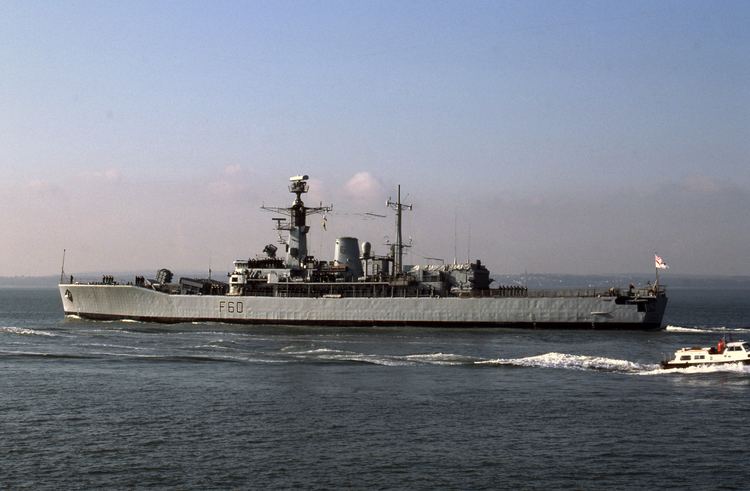
Jupiter also enjoyed fame on BBC TV, through starring as HMS Hero in the acclaimed drama series Warship. All members of the crew were given HMS Hero cap tallies for filming purposes. The main ship used for filming was, however, HMS Phoebe.
1980s
In 1980, Jupiter's modernisation commenced, and included the addition of the Sea Wolf missile system, as well as the removal of her twin 4.5-inch (114 mm) gun turret in favour of the Exocet anti-ship missile. The boilers were modified to the Babcock & Wilcox Y160 Steam Atomisation type water-tube boiler. the modernisation was completed in 1983.
On 13 June 1984, as she was leaving the Pool of London after a visit to the capital, she collided with London Bridge causing significant damage to both ship and bridge. The ship's Captain, Commander Colin Hamilton, was later court martialed at Portsmouth on 4 December 1984.
In September 1986, Jupiter was part of the NATO exercise "Autumn Train '86'" and visited Gibraltar, then spent a continuous four weeks in the Mediterranean Sea, and returned to Gibraltar prior to returning to her (then) home base of Plymouth. Jupiter changed her home port to Portsmouth in 1985. She was a member of the 7th Frigate Squadron.
In 1986, captained by Commander R Bridges, Jupiter deployed to the Persian Gulf - the Armilla Patrol - in partnership with HMS Newcastle and RFA Brambleleaf, and while there, helped in the evacuation of British and Commonwealth nationals from the People's Democratic Republic of Yemen after a campaign to overthrow the government of that country began. Her exploits were broadcast by the BBC World Service.
During the Armilla Patrol, Jupiter paid courtesy calls to Gibraltar, Djibouti, Aqaba, Doha, Muscat, and Mombasa, and returned via the Suez Canal and Piraeus. After a transit of the Corinth Canal, Commander Bridges was promoted to Captain during the return voyage.
Between 1984 and 1986, Jupiter also visited Bremerhaven, Amsterdam, Bordeaux and Middlesbrough. In September 1986, she was Guard ship to the Tall Ships Race visit to Newcastle upon Tyne.
Jupiter was twinned with the town of Middlesbrough in North East England.
1990s
During the First Gulf War, Jupiter was on Armilla Patrol, which was created in 1980 in response to the increased danger posed by the Iran–Iraq War to British interests. Her last deployment came in late 1991 to early 1992 when she deployed to the South Atlantic. Jupiter decommissioned in 1992. She was sold for scrap in 1997 and towed to Alang in India to be beached and broken up.
